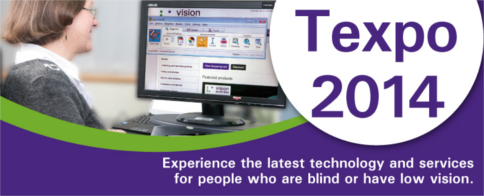Digital technology
Windows tablets
The focus of Windows 8.x devices having both the traditional keyboard-and-mouse interface and touch-screen interface has blurred the lines between Windows being a mobile platform and a desktop platform. To add confusion, the more affordable versions of the Surface tablet run a version of Windows 8.x called Windows RT which has a similar look and feel to the traditional Windows desktop but is limited in this functionality. This page provides a guide as to how you can ensure that the Windows 8.x tablet you purchase will support the accessibility features you need.
Top of page
Accessible consumer technologies and the cloud: VisAbility Tech Outlook 2014
Presented at the VisAbility Tech Outlook 2014, Dr Scott Hollier covers the journey of Assistive Technologies (AT) from the hardware-based solutions of the 1980s, to the wide range of affordable AT options available today (including accessibility developments of Windows, Mac, iPhone and Android). The importance of the cloud in relation to the future AT is discussed, including its benefits and issues for consumer accessibility.
Top of page
Assistive technology: choice never greater
That’s the message delivered today to attendees of the VisAbility Technology Outlook conference in Perth, Western Australia by Media Access Australia’s resident accessibility expert, Dr Scott Hollier.
Dr Hollier said that assistive technology had had a long history with hardware-based text-to-speech technology being showcased in 1981, and SAM (Software Automatic Mouth) being released in 1982 for early personal computers from Atari, Apple and the Commodore 64.
Top of page
ACCAN announces Apps For All Challenge winners
The challenge, announced earlier this year, was run by the Australian Communications Consumer Action Network (ACCAN) and the Australian Human Rights Commission (AHRC), and sponsored by Telstra.
Prizes for the winners included the Telstra Prize of $1500 in cash, promotion through Telstra’s social media and a one-off opportunity to participate in a mini-incubator experience with Telstra’s own in-house app developers and technology specialists.
Top of page
Google launches Android One smartphone
According to Google's senior vice president of Android, Chrome and Apps, Sundar Pichai, to date the cost of smartphones has been a major barrier to people in countries such as India, Indonesia or the Philippines.
"Even entry-level smartphones still remain out of reach for many (bear in mind that in some of these countries the average monthly income is around US$250)," he wrote in a blog post on the release of Android One in India.
Top of page
Cavena announces text-to-speech system for ‘audio subtitling’
The system, which will use text-to-speech technology developed by Acapela Group. “Users who cannot read the small text at the bottom of the TV screen, will now be able to listen to it,” said Henrik Moberg, CEO of Cavena. “Furthermore, it will ease access for illiterate people or users that find it difficult to follow written subtitles.”
Top of page
Apple launches new iPhone 6 and 6 Plus with accessibility features
The Apple iPhone 6 and 6 Plus run the new iOS8 operating system which, like other recent iPhones, contains a number of accessibility features such as the VoiceOver screen reader, zoom, playback of captioned video and high contrast themes. The new iOS8 also contains additional accessibility features including an improved zoom, a greyscale feature, improved predictive text for the on-screen keyboard and the ability to use different software keyboards.
Top of page
Australian accessible apps developers to be honoured
The challenge, announced earlier this year, is being run by the Australian Communications Consumer Action Network (ACCAN) and the Australian Human Rights Commission (AHRC), and is sponsored by Telstra.
For the category of 'Most accessible mainstream app', the finalists are: Energy Rating, ACCC Shopper and My Bus (Canberra Transport).
Top of page
New device to provide access to graphical information
According to Curtin’s Senior Lecturer Dr Iain Murray and PhD student Azadeh Nazemi of Curtin’s Department of Electrical and Computing Engineering, the new device uses a number of technologies, such as pattern recognition and machine learning, to identify images, graphs, maths or text on a page, then convert that information to audio format with navigation markup.
Top of page


